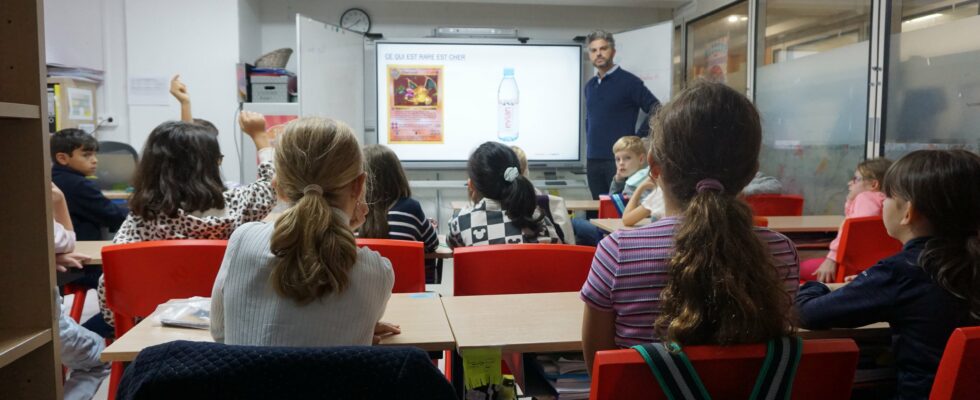On the board, an image of a Pokémon card and a photo of a water bottle. “What costs the most?” says Anthony Benhamou to a CM1 class. Fingers go up, answers come forth: “The Charizard card!” Well done. This unique edition was sold at auction in London for 418,000 euros, the economist tells them, who speaks that morning to the students of the Petit Cours du Rocher, a private school in the 8th arrondissement of Paris. “Everything rare is expensive. But is this card useful?”
A little girl guesses where this teacher for a day is going with this: “We don’t need it as much as water. Water allows us to survive.” Well taken: the next slide features a bottle in an arid desert. No Pokémon card in the world can quench your thirst. “What determines the price of something is both its rarity and its usefulness,” concludes Anthony Benhamou, an economist at Medef in the civil sector, before awakening these young minds to other notions about training. prices. All in three quarters of an hour flat. Children learn the concept of margin, by evaluating the selling price of a hamburger, and quickly understand why the price set must be higher than the cost of the ingredients.
Some obviously have an innate sense of business. Like this little brunette in a Mickey sweatshirt, who clearly understood that we could choose to sell a lot of goods at a low price or a few at a high price, depending on whether we play on volumes or value. And why not advertise to sell your products? “But it’s expensive!” she unchecks. Wearing a blonde ponytail and white turtleneck, a friend adds: “During the summer, I opened a shellfish store. To sell more, I lowered the price.” Perfect transition to the law of supply and demand.
The format wins student support
Practical examples, fun references. The format is effective and wins the support of students, teaching staff, and parents when the budding economists rekindle the debate in the evening at dinner. To carry out his approach, Anthony Benhamou created a structure in 2022, A3E (Acting for the economic education of children). But his reflection dates back to 2019, during a stay in London. Equipped with a bank note bearing the image of Adam Smith, pope of economic thought, he tests the knowledge of a waiter at the café. Ignorance and indifference… The Parisian leaves disappointed. And understands that you can go through your entire schooling without taking an economics course. The level of maths in France crystallizes concerns. Managing a budget or understanding the intricacies of credit are also important. However, the French barely rank among the average of OECD countries, according to the Banque de France survey which measures their knowledge in this area. And only 15% of them say they are well trained in economics, deplores Christine Lagarde, the president of the European Central Bank, in the preface to On bet you’ll love the economy! (Ellipses). A work co-authored by Anthony Benhamou and Marc-Olivier Strauss-Kahn, former economist at the Banque de France, intended for an audience of students and executives.
“However, it is a discipline which allows a better understanding of the world, better decision-making, insists the first. Economists are the champions for commenting on what is going wrong. It is also up to us to move society forward.” This father of four young children tests his intuitions with his offspring. This is how he designed a module based on the character of Picsou, idol of the elder, around the theme of money, “without taboo, in a country of Judeo-Christian tradition where talking about money does not go no self.” The second session is devoted to price formation. The third addresses the world of business, through the example of a lemonade manufacturer. “We try to determine the price of the product, and we toast at the end of the session. It should be a good time.” The teacher visits around ten primary schools per year, in the Paris region and in the north of France.
The schoolchildren are then invited to Citéco, the City of the Economy, former branch of the Bank of France which has become a museum, in the 17th arrondissement of Paris. They visit the safe room, and leave the photo booth with their reel on a bank note. To reach out to 6-10 year olds, Citéco will create a dedicated space, a project to which Anthony Benhamou is contributing. “In class, we enter their world. This time, they will enter ours.”
